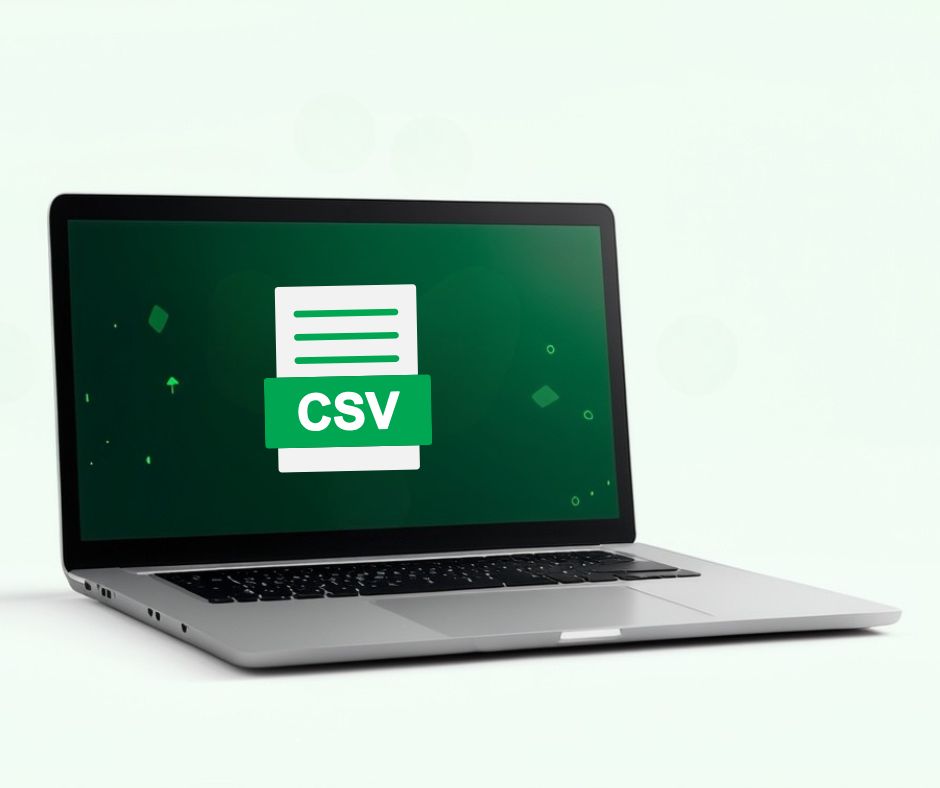In our data-driven world, managing and analyzing information is crucial. Two common file formats used for storing and handling data are CSV (Comma-Separated Values) and XLSX (Microsoft Excel Open XML Spreadsheet). Understanding these formats and knowing how to convert CSV to XLSX can enhance your data processing capabilities.
What is a CSV File?
A CSV file is a plain text file that stores tabular data, with each line representing a row and each value separated by a comma. This simple structure makes CSV files widely compatible and easy to process across various platforms and applications. However, CSV files lack advanced features such as formatting, formulas, and multiple worksheets.
Example CSV File:

❌ No styling, formulas, or structured table elements.
XLSX File (Formatted Spreadsheet)
When converted to an XLSX file, the same data would appear in an Excel table with columns and rows:
| Name | Age | City |
|---|---|---|
| John Doe | 30 | New York |
| Jane Smith | 25 | Los Angeles |
| Michael Brown | 40 | Chicago |
✅ Neatly organized into rows and columns
✅ Supports formatting (bold, colors, borders)
✅ Allows formulas, charts, and multiple sheets
Why Convert CSV to XLSX?
Converting CSV files to XLSX format offers several advantages:
- Enhanced Data Analysis – XLSX files support complex formulas, functions, and data analysis tools like pivot tables.
- Better Data Visualization – You can apply formatting, create charts, and use conditional formatting.
- Multi-Sheet Support – Organize your data across multiple worksheets in one file.
- Improved Data Integrity – XLSX files allow data validation, password protection, and better file security.
When to Use CSV vs. XLSX?
While XLSX provides more features, CSV files still have their advantages in certain scenarios:
| Feature | CSV | XLSX |
|---|---|---|
| File Size | Smaller | Larger |
| Compatibility | Works on any system | Requires spreadsheet software |
| Formulas & Functions | ❌ Not supported | ✅ Fully supported |
| Multi-Sheet Support | ❌ No | ✅ Yes |
| Formatting Options | ❌ None | ✅ Extensive |
Use CSV when:
You need a lightweight, universal format for exporting/importing data.
Use XLSX when:
You require formatting, formulas, and structured data organization.
How to Convert CSV to XLSX Online?
Converting CSV files to XLSX format is straightforward using online converters like Online Convert.
Here’s a step-by-step guide:
- Go to the Website: Choose CSV to XLSX converter.
- Upload the CSV File: Choose the CSV file you want to convert.
- Choose an Option:
- Convert – Scanned pages will be saved as images.
- Convert with OCR – Scanned pages will be converted into editable text.
- Select the Source Language – For the best OCR results, select all languages present in your file.
- Improve OCR (Optional) – Enhance text recognition for better accuracy.
- Start Conversion – Click “START” to begin the process.
- Download Your XLSX File – Once the conversion is complete, download your new XLSX file.
Online Convert supports various file formats, ensuring accurate conversion results.
In Conclusion: CSV to XLSX
Converting CSV files to XLSX enhances your ability to analyze, visualize, and manage data with ease. Unlike plain text CSV files, XLSX format allows you to use advanced Excel features like formulas, charts, filters, and multi-sheet organization—making your data more structured and interactive.
With Online Convert, transforming your CSV files into XLSX is quick and effortless. No need for specialized software—just upload, convert, and download your formatted spreadsheet in seconds!
💡 Try it now and take full advantage of the powerful capabilities of XLSX for your data management needs!
You May Also Like:
📌 5 Little-Known Excel Features You Need to Try – Discover hidden Excel tricks that can boost your productivity.
📌 Productivity: 10 Essential Excel Add-Ins – Enhance your workflow with must-have Excel extensions.
📌 Convert to Microsoft Excel – Learn how to convert different file formats into Excel seamlessly.


